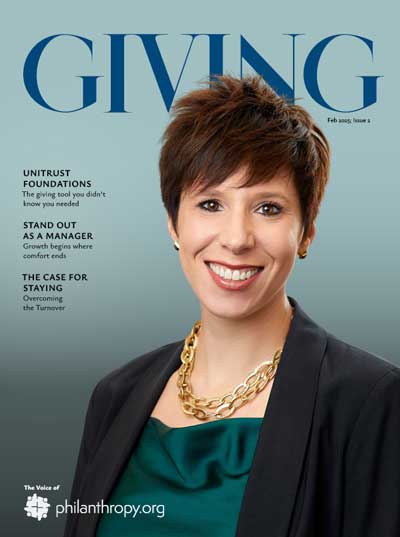A client told me recently that we should be publishing more about what’s NEW in planned giving. Seems reasonable, right? Everyone likes new stuff. We all want to know the trends, be on the cutting-edge, sound knowledgeable at professional events.
There’s just one tiny problem with his suggestion. There’s nothing new in planned giving.
Now, hold on. Before you start composing a fiery email to me to tell me why I’m wrong, hear me out.
When I started in this industry 25 years ago, bequests were far and away the most common type of planned gift. I used to tell nonprofits they could easily start a planned giving program based entirely on bequests. Add in beneficiary designations—the simplest planned gift—and you’re golden.
If It Ain’t Broke …
Today, a quarter century later, guess what is far and away the most common type of planned gift? Hint: it starts with a ‘B.’ Guess what is still the simplest planned gift anyone can make? Hint: Its initials are “B.D.”
As the Bible verse states, there’s nothing new under the sun. But advertisers love to use the word “new!” It’s eye-catching and sparks interest. You’ve seen product packaging that proclaims “Same great product, NEW design!” There’s no logical reason a consumer would care that the label on the pickle jar has a new design. But advertisers know American consumers are drawn to “new.” So if they can find a way to slap the word “new” on the label, sales go up.
But there’s a reason for the old saying “If it ain’t broke, don’t fix it.” Some planned gifts are more popular than others. They always have been, and probably always will be. And unlike for-profits, we can’t just slap the word “new” on a planned giving ‘product’ to make it seem shinier.
Forget Shiny. Stay The Course Instead.
I don’t blame my client for wanting something new. New is exciting and energizing; it’s a distraction from the mundane. But if you want to be successful in planned giving, you have to stay the course. You must do the steady work of cultivating—and maintaining—relationships. You must be patient and proactive. You must understand that the road to success is the same one that planned giving professionals have been following for decades. Instead of chasing “new,” you need to pick up the phone. You need to take a donor to lunch. And you need to focus on bequests and beneficiary designations.
I could try to sell you something shiny and new. But I’m not going to. There’s nothing new in planned giving. Instead, I’ll repeat what I’ve been saying for 25 years: Planned giving is a people business. If you love people, you will raise more money than you’ve ever imagined.



